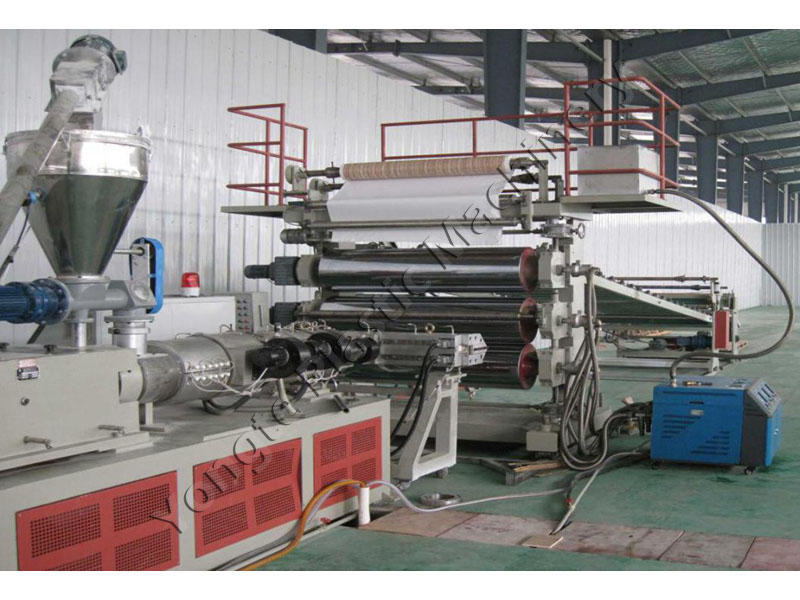How plastic sheet extrusion machines typically works
2024-05-07
A plastic sheet extrusion machine is a type of equipment used in the manufacturing process of plastic sheets. Here's how it typically works:
1. Feeding: Plastic resin pellets are fed into a hopper at the top of the extrusion machine. The pellets may be a specific type of plastic, such as polyethylene or polypropylene, depending on the desired properties of the final sheet.
2. Melting: Inside the extruder, the pellets are heated and melted by a combination of heat and mechanical energy. The melted plastic becomes a viscous fluid that is ready for shaping.
3. Extrusion: The molten plastic is forced through a die, which shapes it into a continuous flat sheet of uniform thickness. The die determines the width and thickness of the sheet.
4. Cooling: As the plastic sheet emerges from the die, it passes through a series of cooling rollers or a cooling bath. This rapid cooling solidifies the plastic, ensuring that it maintains its shape and dimensions.
5. Trimming and Cutting: Once the plastic sheet has cooled and solidified, it may be trimmed to remove any irregular edges or excess material. It can then be cut into smaller sheets of the desired size.
6. Winding or Stacking: The finished plastic sheets are either wound into rolls or stacked onto pallets, depending on their intended use and transportation requirements.
Plastic sheet extrusion machines are used to produce a wide range of plastic sheets with various properties, thicknesses, and surface finishes. These sheets are used in numerous industries, including packaging, construction, automotive, and agriculture, for applications such as packaging materials, signage, roofing, and insulation.



